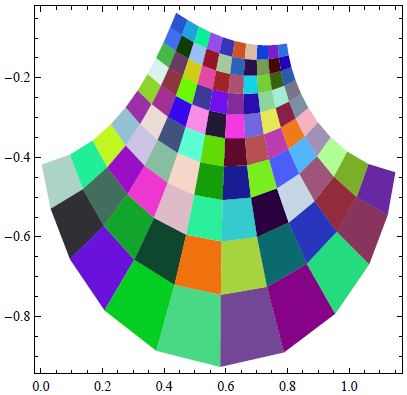12-240/Fields' Further proof: Difference between revisions
Michael.Wang (talk | contribs) m (12-240/ moved to 12-240/Fields' Further proof) |
Michael.Wang (talk | contribs) No edit summary |
||
| Line 1: | Line 1: | ||
[[Image:12-240-Splash.png]] |
|||
[[12-240/Classnotes for Thursday September 13]] |
|||
[[12-240/Classnotes for Tuesday September 11]] |
|||
In the first class, Professor says something about particular fields. Forgive me, because I am an international student, if I can not express information precisely. |
In the first class, Professor says something about particular fields. Forgive me, because I am an international student, if I can not express information precisely. |
||
About: F(n) F(1) F(2) and F(3) are a field, but F(4) is not. Professor said that any number N which is not a prime number can not "form" a field. |
About: F(n) F(1) F(2) and F(3) are a field, but F(4) is not. Professor said that any number N which is not a prime number can not "form" a field. |
||
If you do not understand what the F(n) means, you can look through the file "12-240/Classnotes for Tuesday September 11" |
|||
Here is the proof. |
Here is the proof. |
||
| Line 21: | Line 27: | ||
4 . . . . ....................... |
4 . . . . ....................... |
||
. . . . . ....................... |
|||
. |
|||
a 0 (a) (2a) (3a)...........(a*b).....(n-1)*a ( in this row, every element mod n) |
a 0 (a) (2a) (3a)...........(a*b).....(n-1)*a ( in this row, every element mod n) |
||
.................................... |
|||
. |
|||
.................................... |
|||
. |
|||
...................................... |
|||
. |
|||
..................................... |
|||
. |
|||
n-1.................................. |
n-1.................................. |
||
| Line 38: | Line 44: | ||
see the (a+1)th row |
see the (a+1)th row |
||
There must be a "1" in this row, each row |
There must be a "1" in this row, actually each row or column, to meet the rule :Existence of Negatives/Inverses. |
||
| ⚫ | |||
| ⚫ | |||
| ⚫ | |||
| ⚫ | |||
2.n=ab |
2.n=ab |
||
| ⚫ | |||
==>>m*a=k*a*b+1 (a≠1) |
|||
| ⚫ | |||
unless a=1 |
unless a=1 |
||
m will not exist. |
m will not exist, because m should be an integer. |
||
so F(n), when n is not a prime number, is not a field. |
so F(n), when n is not a prime number, is not a field. |
||
Revision as of 13:48, 12 September 2012
 12-240/Classnotes for Thursday September 13
12-240/Classnotes for Tuesday September 11
12-240/Classnotes for Thursday September 13
12-240/Classnotes for Tuesday September 11
In the first class, Professor says something about particular fields. Forgive me, because I am an international student, if I can not express information precisely.
About: F(n) F(1) F(2) and F(3) are a field, but F(4) is not. Professor said that any number N which is not a prime number can not "form" a field.
If you do not understand what the F(n) means, you can look through the file "12-240/Classnotes for Tuesday September 11"
Here is the proof.
If we have a field F(n), and n=a*b (a,b,n∈ N*, a,b≠1)
IN defination of multiplication
- 0 1 2 3 .......... b.......n-1
0 . . . . ......................
1 . . . . ......................
2 . . . . ......................
3 . . . . .......................
4 . . . . .......................
. . . . . .......................
a 0 (a) (2a) (3a)...........(a*b).....(n-1)*a ( in this row, every element mod n)
....................................
....................................
......................................
.....................................
n-1..................................
see the (a+1)th row
There must be a "1" in this row, actually each row or column, to meet the rule :Existence of Negatives/Inverses.
So if F(n) is a field, then
1.m*a=k*n+1 (k,m∈N*, m<n) there must exist k,m. 2.n=ab
==>>m*a=k*a*b+1 (a≠1)
==>>m=k*b+1/a
unless a=1
m will not exist, because m should be an integer. so F(n), when n is not a prime number, is not a field.
There is a large need for me to improve my format. Editing is welcomed.
PS: But till now, there are still some questions existing.
How can we prove that a prime number N can absolutely form a field? Is there any exception?
I am still working on it.
----Michael.Wang